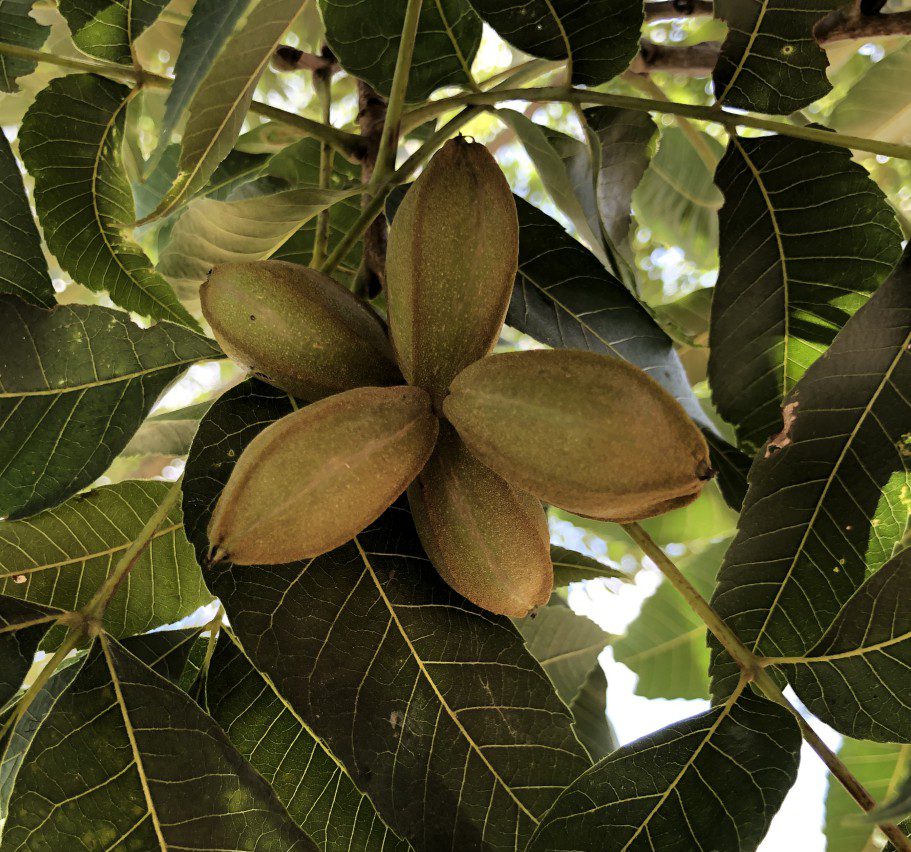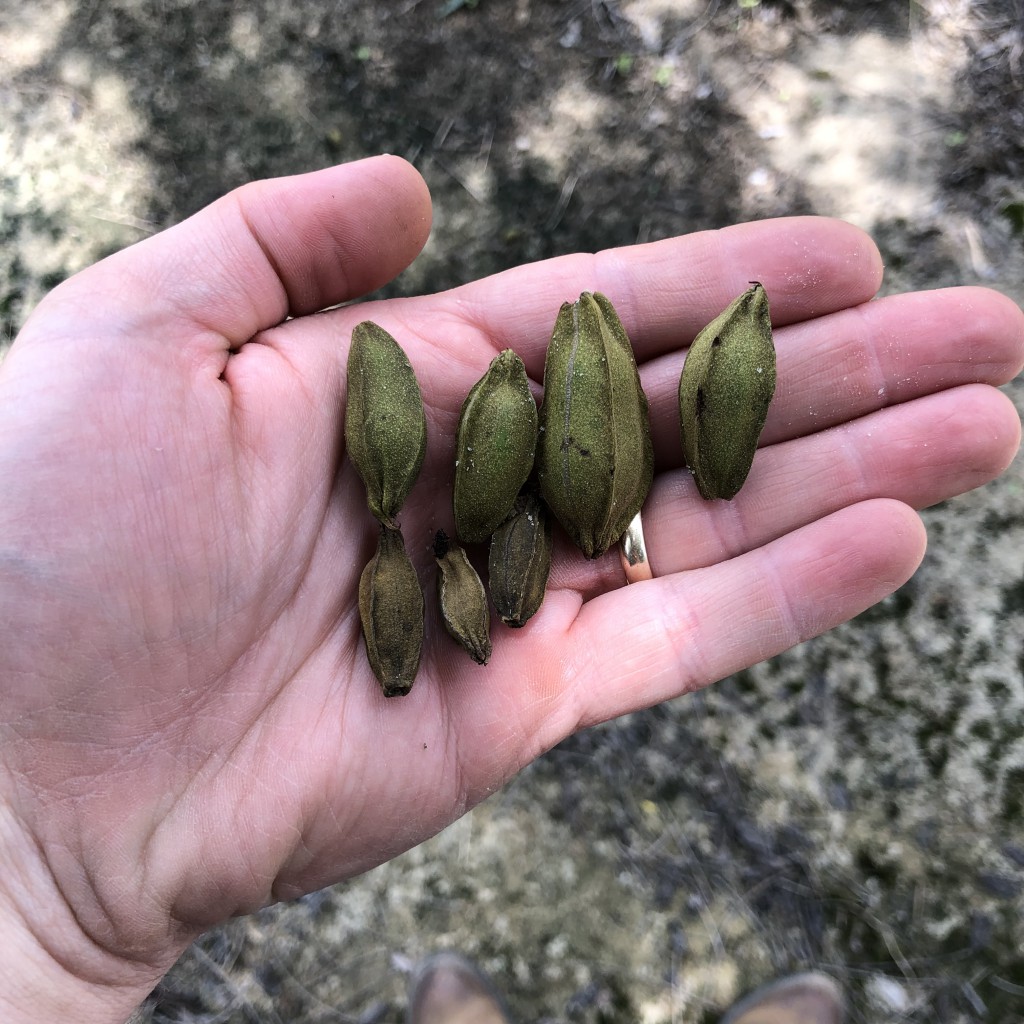Crop is looking good and nuts are sizing fast now. Fruit sizes large on hot days and warm nights. Following June rains, we have been dry in the middle part of the Southeast and could use some rain. Many growers have noted scab not being as severe, and this of course is mostly due to a very dry month of May. We cut back our fungicides sprays during that time, which was a very good idea. Now with rains, we are seeing scab on susceptible varieties. The good news is we didn’t let the June rain get ahead of our fungicides, so scab pressure is very manageable right now.
Nut Drop
We are seeing some nut drop that doesn’t have us very concerned, but something to note. On Sumners, I have seen or been contacted about a significant drop of nuts right now or in the past 2 weeks. With no signs of hickory shuckworm damage, well-managed trees, and good sunlight, this drop is due to drought conditions and rain that followed. Notice the different size nuts from this Sumner orchard in Montgomery County:
Keep in mind that Sumners are occasionally known to drop some nuts right at August. As all trees get older, they alternate more and more, and this is characteristic of Sumner as well. This orchard had a really good crop last year then lost everything from the hurricane. There are many other reasons for nut drop, and other orchards I visit are experiencing nut drop from different issues. It doesn’t look to be a serious issue in either case.
Early Black Pecan Aphid Damage
Something interesting we observed this past month is damage from early black pecan aphid feeding. Damage on the leaves was more necrotic (brown) and followed a pattern more similar to a leaf scorch, indicating older damage.
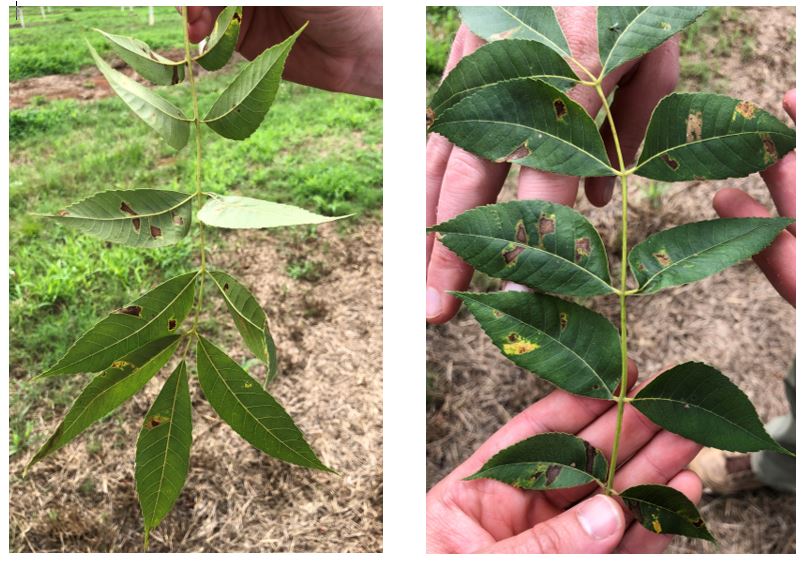
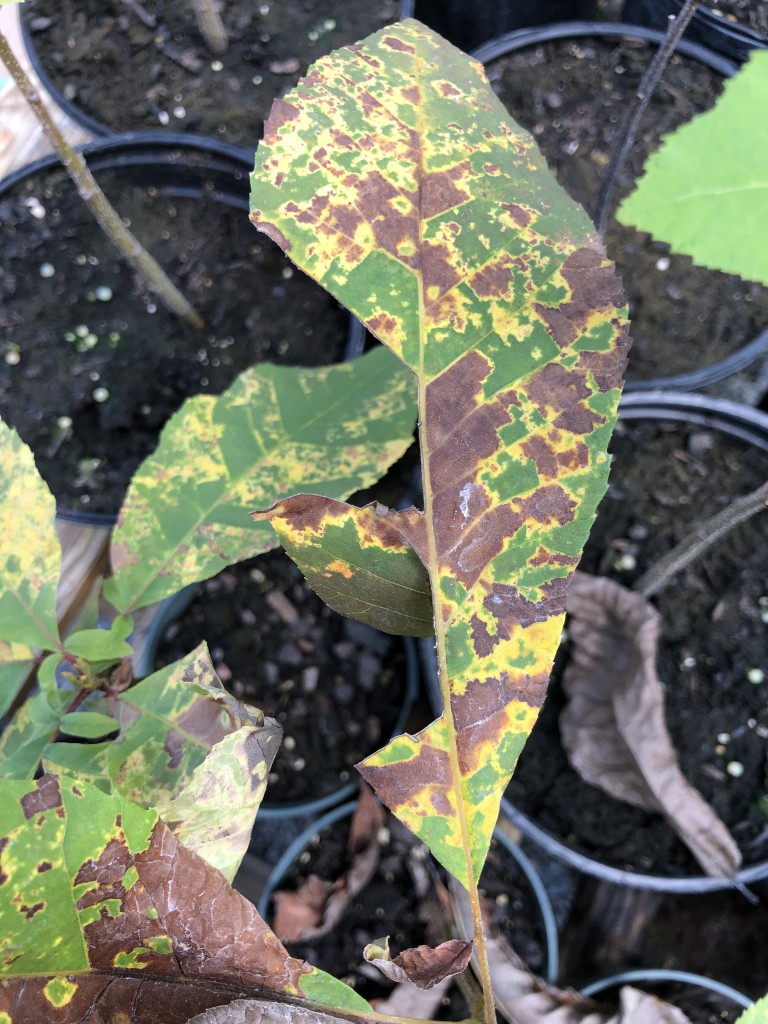
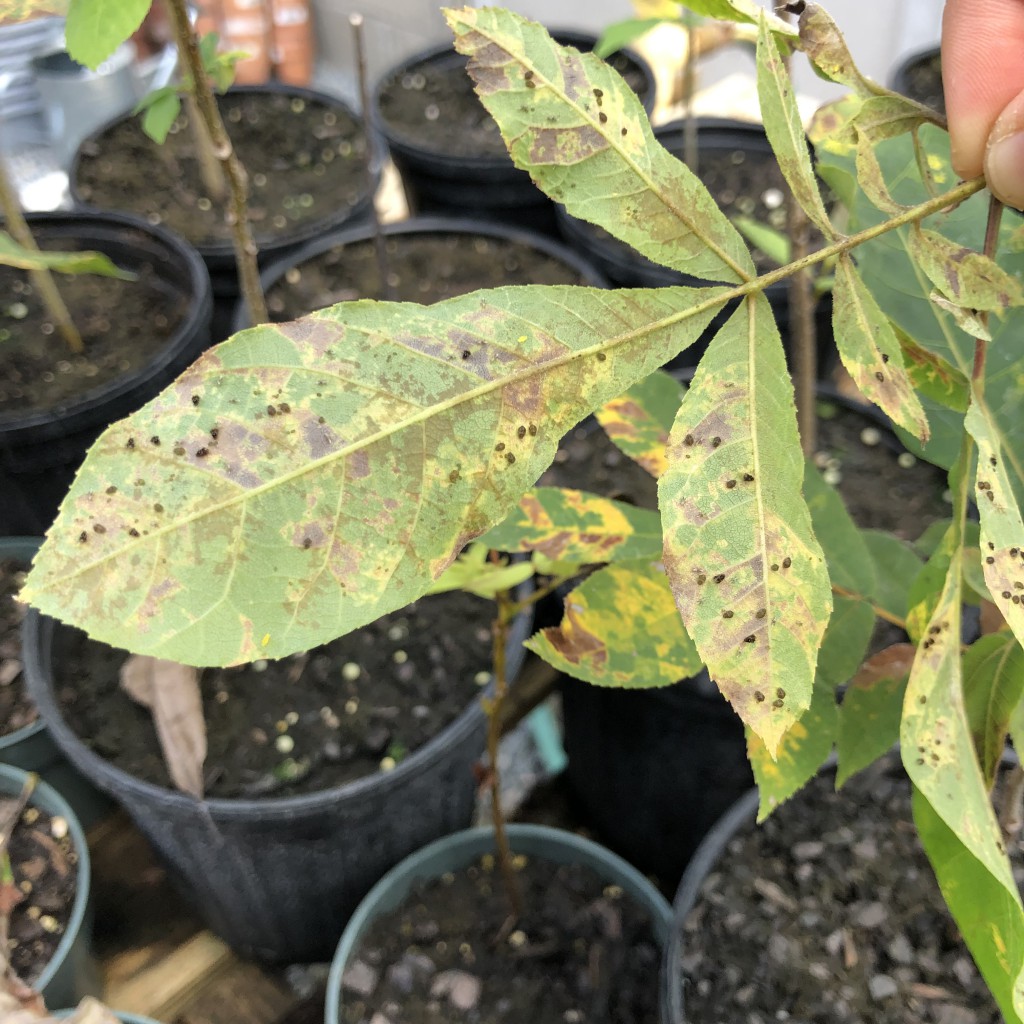
Black pecan aphids will feed on leaves throughout the season. This situation was observed on susceptible and non-susceptible varieties. There were no nymphs in the orchard at the time. This brings to mind some questions growers may have:
If black pecan aphid damage is present early in the season, should we spray? If no nymphs are present, and threshold is not met, then we run a higher risk of getting resistance by spraying. If only light damage is present on a few leaves or if there is no damage, spraying gibberillic acid 3 times starting in mid-July, 10 days apart is the best option for buying time to catch the next flight while minimizing the damage (gibberillic acid masks the symptoms of bpa by preventing the development of yellow spots on the leaves).
Would early damage from BPA be significant if nymphs feed in damaged spots? Nymphs do feed in damaged spots, however, when the rise in populations of BPA occurs in late season, it will not be impacted by early damage. If populations are high, they will be high regardless of early damage.
Even today, I’m seeing lots of black pecan aphid damage but no leaf drop. I find adult BPA but no nymphs, and I believe this tells the story. Especially where we see lots of eggs from green lacewings, we need to hold off until populations spike. But be on the lookout, bpa will be just around the corner on susceptible varieties.

